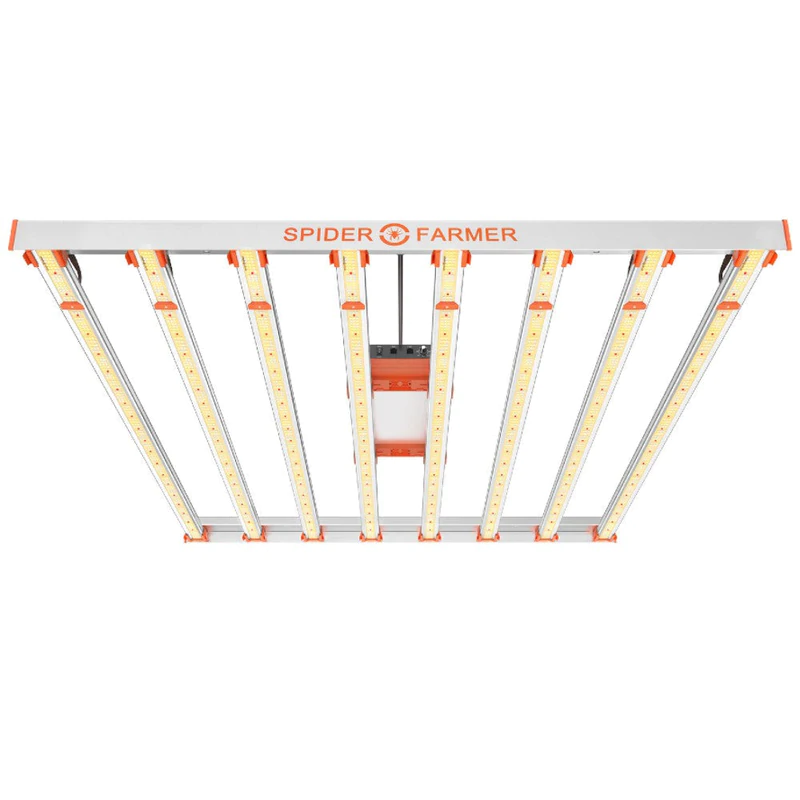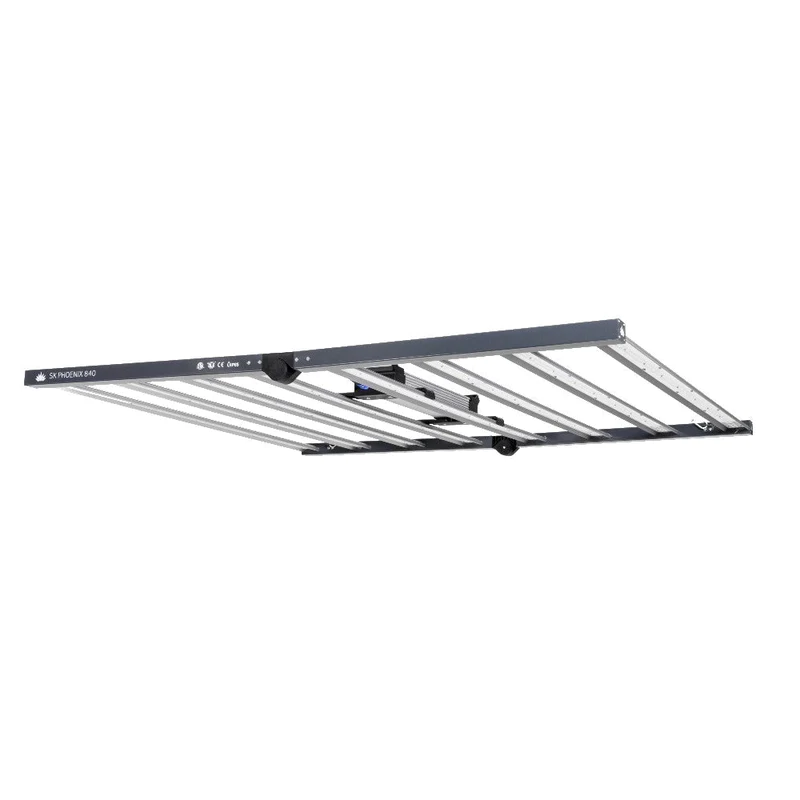- Home
- SHOP ECO FARM
-
TOP BRANDS
-
Grow Lights Brands
- Adjust-A-Wing
- Apollo Horticulture
- Bestva
- Black Dog LED
- California Lightworks
- ChilLED Grow Light
- Eco Farm
- HLG - Horticulture Lighting Group
- Kingled
- Kind LED
- Mars Hydro
- Morsen
- Neilo
- NextLight
- Phlizon
- PlatinumLed
- Roleadro
- Optic LED Grow Lights
- ViparSpectra
- Vivosun
- EYE Hortilux
- IPOWER
- NanoLux
- Phantom grow light
- Gavita grow lights
- Grower's Choice
- Lumatek
- Maxibright
- Yearld Pro
- ThinkGrow
- Crecer Lighting
- Green Sunshine Electric Sky
- fohse aries
- loriflux
- luxx
- fluence
- iluminar
- Lex
- LTC
- Rayonled
- FGI
- PHOTONTEK
- Grow Tents & Kits Brands
- Extraction & Harvest Brands
- Climate Control & Hydroponic Brands
-
Grow Lights Brands
- COMPANY INFO
- COOPERATE WITH US
- Blog
- Sign in
- Home
-
SHOP ECO FARM
- ECO Farm Grow Lights
- ECO Farm LED Grow Lights
- ECO Farm Quantum Board
- ECO Farm Samsung LED Grow Lights
- ECO Farm COB Grow Lights
- ECO Farm Commercial Lights
- ECO Farm Supplemental Grow Light
- ECO Farm Fluorescent grow lights
- ECO Farm HPS & MH Grow Lights
- ECO Farm CMH Grow Lights
- ECO Farm HID/CMH Bulbs & Ballasts
- ECO Farm Grow Tents & Kits
- ECO Farm 2x2ft Grow Kits
- ECO Farm 3x3ft Grow Kits
- ECO Farm 3.3x3.3ft Grow Kits
- ECO Farm 4x4ft Grow Kits
- ECO Farm 5x5ft Grow Kits
- ECO Farm Grow Tent - Standard Style
- ECO Farm Grow Tent - Extension & Roof & Lodge Style
- ECO Farm Extraction & Harvest
- ECO Farm Rosin Press Machine
- ECO Farm Dry & Wet Trimmers
- ECO Farm Oil Accessories
- ECO Farm Medicinal Plants Grinder
- ECO Farm Medicinal Plants Containers
- ECO Farm Medicinal Plants Dryer
- ECO Farm Refrigeration Dryer
- ECO Farm Climate Control & Other Accessories
- ECO Farm Inline Duct Fans
- ECO Farm Oscillating Fans
- ECO Farm Exhaust Fans
- ECO Farm Air Filter
- ECO Farm Duct Muffler
- ECO Farm Ventilation Kits
- ECO Farm Plant Humidifiers
- ECO Farm Plant Dehumidifiers
- ECO Farm Hydroponic Accessories
- ECO Farm Other Accessories
- ECO Farm Hydroponics Microscopes
-
TOP BRANDS
- Grow Lights Brands
- Adjust-A-Wing
- Apollo Horticulture
- Bestva
- Black Dog LED
- California Lightworks
- ChilLED Grow Light
- Eco Farm
- HLG - Horticulture Lighting Group
- Kingled
- Kind LED
- Mars Hydro
- Morsen
- Neilo
- NextLight
- Phlizon
- PlatinumLed
- Roleadro
- Optic LED Grow Lights
- ViparSpectra
- Vivosun
- EYE Hortilux
- IPOWER
- NanoLux
- Phantom grow light
- Gavita grow lights
- Grower's Choice
- Lumatek
- Maxibright
- Yearld Pro
- ThinkGrow
- Crecer Lighting
- Green Sunshine Electric Sky
- fohse aries
- loriflux
- luxx
- fluence
- iluminar
- Lex
- LTC
- Rayonled
- FGI
- PHOTONTEK
- Grow Tents & Kits Brands
- Apollo Horticulture
- Black Box
- CoolGrows
- Eco Farm
- GrowLab
- Gorilla Grow Tents
- Mars Hydro
- Quictent
- Secret Jardin
- Unit Farm
- TopoGrow
- VIVOSUN
- Topolite
-
COMPANY INFO
-
COOPERATE WITH US
- Blog
Spider Farmer G860W Full Spectrum LED Grow Light VS Spectrum King Phoenix 840W LED Grow Light
September 17, 2022
When gardening in enclosed spaces, you must rely on other light sources. LED grow lights are perfect if you decide you want a garden but don’t have outdoor space. These indoor grow lights allow you to create a plant-friendly environment that allows you to be the gardener you’ve always wanted to be.
But choosing the right light for your specific growth needs can be difficult. LED grow lights all work by providing different types of light that provide the same benefits as sunlight, but they all have unique features to consider. Whether you want to grow succulents in your bedroom or a full range of vegetables in your kitchen, there are a variety of grow lights to meet your specific needs.
Which LED grow light to choose?
Adequate light is essential for indoor growth. With so many types of grow lights on the market, such as LED grow lights, HIDs, and fluorescent lights, which one should you choose? This is a headache for many novice growers. For this question, the answer we give is undoubtedly LED plant lights.
Compared with other types of lamps, it saves electricity, has good heat dissipation and is cost-effective.
Spider Farmer G860W Full Spectrum LED Grow Light

Features:
This Spider Farmer LED Grow Light features an even peripheral PPFD score for even coverage, ensuring maximum light per plant. The elongated light bar design also ensures a more even distribution of light, reaching all edges and corners. The strip grow light design and the aluminium heatsink on the back contribute to better airflow and good heat dissipation. The G860W Garden Light features a detachable driver and 6.56" long power cord to reduce ambient heat in the grow space for longer life. The LED diodes are coated with water repellent, so they are not afraid of a wet environment. Dimming daisy-chaining allows you to link up to 60 G680W Series grow lights together — dimming multiple lights simultaneously. Widely used in commercial cultivation, vertical farming, home gardens, home cultivation, CO2 systems and hydroponics.
Spectrum King Phoenix 840W LED Grow Light

Features:
Spectrum King’s Phoenix 840W is ideal for photon-hungry crops that can handle strong light. With 16% less wall power than standard HPS fixtures, the 840 provides some decent output compared to other fixtures while still saving electricity and heat. Spectrum King’s custom spectrum is tested and customized to maximize plant and flowering cycle growth. The intensity of this dimmable light can be as low as 10%, enabling growers to simulate a sunrise/sunset effect. Spectrum King’s innovative Cryo-Therm cooling technology features an ultra-thin profile that maximizes airflow and minimizes microclimates. The Phoenix 840 grow light is optimized for single or multi-level planting close to the canopy.
Things to Consider Before Buying Grow Lights
Grow lights are meant to help your plants grow strong and healthy, so it’s important to have a good understanding of what to look for before choosing a product for your setup. Consider the brightness of the light, the light spectrum that each product can produce, and the type of grow light that would be best for the size and configuration of your grow tent.
Brightness
In most circumstances the brightness of a light would be measured in lumens. However, lumens can only be used to measure visible light. Plants are capable of absorbing a wider spectrum of light for photosynthesis, which is known as the photosynthetically active radiation (PAR) zone. So, the PPF and PPFD are required to adequately measure the brightness of a grow light.
– PPF is the standard measurement used for determining the amount of light within the PAR zone created by a single light source per second. Grow light manufacturers measure PPF in micromoles per second (μmol/second). In general, grow lights with a high PPF value are considered more effective, especially if the lights can be dimmed to reduce light when necessary.
– PPFD is the preferred measurement when you know the size of the area where the light will be set up. The PPFD indicates the amount of light within the PAR zone that will actually reach the plants or fall within a given surface area each second. Grow light manufacturers will sometimes provide the PPFD, though it’s important to note the size of the tent or room where the PPFD was set — otherwise, the measurement isn’t as useful for determining the actual output. PPFD is typically measured in micromoles per meter squared per second (μmol/m²/s).
Light Spectrum
Natural light from the sun has a spectrum of waves that includes blue light, purple light, red light, indigo light, infrared light, and more. Plants are exposed to the full spectrum when they grow outdoors, but for indoor setups, you will need to consider light spectrum when choosing the best grow lights. Certain colors are more important for your plants’ growth than others, so it’s common to see grow lights that offer full spectrum white lights as well as others that feature a series of colored lights to better control the plant’s various growth stages.
– Blue light is essential for plants to grow from seedlings because it’s the first color on the light spectrum that can be absorbed by plants when they are still in a vegetative state. It’s also necessary throughout the remainder of the plant’s life to help with photosynthesis, leaf expansion, photoperiodic flowering, and leaf curvature towards light.
– Purple light isn’t as important as blue light, but it can improve photosynthetic processes, especially when the plants are young. Adding purple light at later stages doesn’t harm plants, but the effects of this light decline as most plants mature.
– Red light is another key light on the spectrum for healthy plant growth. It can be used to help seedlings sprout and grow, but the effects of red light aren’t really noticeable until the later stages of growth and budding. Both blue and red light are the most important for growing healthy plants.
– White light is the easiest option to go with, especially for beginner growers, because it contains every color on the spectrum. For this reason, white lights are typically referred to as full spectrum lights by manufacturers. White lights encourage growth throughout the entire plant life cycle, but experienced growers may prefer the precise balance and control over plant development that they can achieve with blue, purple, and red spectrum lights.
Conclusion
Having LED grow lights enables you to bring your favorite herbs, flowers and plants indoors. It’s convenient, and you have complete flexibility in what you can plant. With so many different price points of lights, your decision really comes down to personal preference, what you want to grow and where you want to grow. Once you know the type of grow light that is best for your plants and space, you can start growing indoors.
Also in Indoor Grow LED Grow Light
HLG Greenhouse Pro HE HV 630W LED Grow Light VS Geeklight grow light 480W hydroponic led grow light
October 20, 2023
